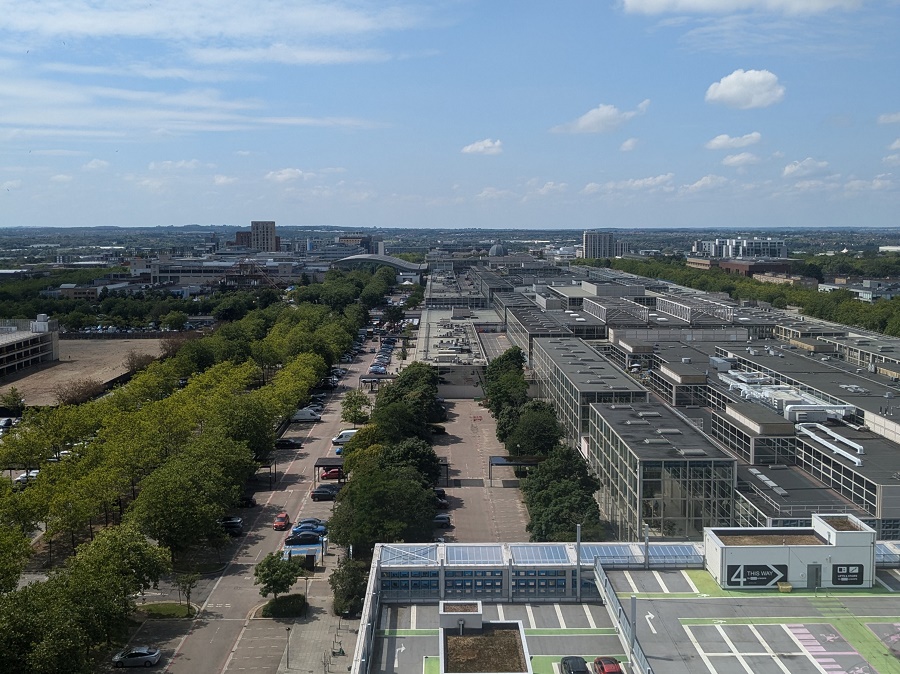Dr David Mountain is the RTPI’s Research Manager. He defended his PhD at the University of Manchester in 2022, which concerned the end of the post-war new towns programme and the rise of urban regeneration.
 What does a successful community look like? How can planners best enable future civic life and culture? Why is it important for settlement-scale planning to remain open to future adaptability? The planning of new towns is an ambitious undertaking, involving the re-seeding of civil society in a new context. This blog post hopes to encourage discussion on crucial topics for successfully planning a new generation of new towns.
What does a successful community look like? How can planners best enable future civic life and culture? Why is it important for settlement-scale planning to remain open to future adaptability? The planning of new towns is an ambitious undertaking, involving the re-seeding of civil society in a new context. This blog post hopes to encourage discussion on crucial topics for successfully planning a new generation of new towns.
The post-war new towns were shaped by the Second World War, responding directly to damage and stress to both buildings and minds. The demand was for bigger and better housing, new flexible premises for business, easy and efficient transport. But these “push” factors (away from the cities) weren’t all. The post-war new towns promoted a positive, place-based ‘product’, ‘concept’ or ‘lifestyle’ to the public at large, attracting pioneering residents and employers. This new culture emerged amidst the baby boom, growing affluence and consumption, and the rise of popular interest in folk culture, land and nature.
We are living in a very different historical context to that of the post-war moment, but successful new town planning should again accommodate the flourishing of culture, economy and society. We are living through another housing crisis, albeit one with less of a clear origin, but positive concepts could again bring residents, investors, businesses, and workers together, providing the focus for future identity and association.
Community
The post-war new towns found their primary migrational origin-point and community starting-point in the urban boroughs and authorities of their parent cities. This resulted in the coming-together of two discrete populations: local rural populations, and those relocating from the nearby industrial city. This intercultural community-building project wasn’t always easy, for example in areas with religious differences between Protestants and Catholics. It is possible that such approaches would face steeper challenges today.
New towns are substantial developments comprising housing and commercial buildings that are set at a distance from any existing urban centre to avoid daily commuting. They also offer improvements (landscape, access, community, economy) to existing residents and land users. Minimal commuting enhances economic and community development and the creation of mixed ‘self-sufficient’ communities, rather than dormitory towns. But perhaps previous new towns weren’t ambitious enough, and relied too heavily on the transposition of existing nearby urban communities into a new terrain? The successful experience of Milton Keynes suggests that larger new towns with more diverse migrational origin-points are the way forwards.

A panoramic view of Milton Keynes taken from Hotel La Tour (© David Mountain)
Residential mobility has increased over past decades, with more frequent internal migration within the UK. Coworking spaces, health clubs and members clubs are growing in popularity, and there is a growing industry of private-sector expertise for different types of community development within these sectors. While the rise of home and hybrid/flexible working has led to a greater separation between home and workplace for some, it also seems that the role of face-to-face interaction remains crucial. Thriving communities themselves create a diversity of workplaces, catering to different preferences for economic and social association. Future New Town Development Corporations should therefore work closely with the development sector at large to better understand the conditions necessary to scale localised professional community development far beyond existing urban centres of economic activity. This includes learning from coworking space providers, tech accelerators, and flexible laboratory landlords. If the offer is right, substantial new towns could flourish in locations yet further from existing cities.
Governance
How will the government lead? How will investment opportunity in new towns be promoted to potential partners? How will the highest of standards, longevity, as well as good governance precedents be secured? Setting up the right governance structures will be crucial, most of all between locally-elected leaders which will take on responsibility, for example, the schooling requirements of the new community, and which, upon winding-up of Development Corporations, should acquire both assets and liabilities. Clearly-defined thresholds of responsibility between NTDCs, developers, and local authority are crucial, and can enable fair public-private partnership arrangements, whether with start-ups, developers, commercial landlords, hotels, housing associations, arts and culture, etc. Front-loading strong, legally-backed governance arrangements will ensure clear rules of play, high standards and expectations, and clear principles of responsibility.
This blog post hopes to encourage aspiration and ambition for new community creation. But more important is the need for planners and officials not to be too deterministic. While the case for ‘vision’ is important, what is more important is allowing space for fair and open-ended community development, and for culture to emerge over time.


